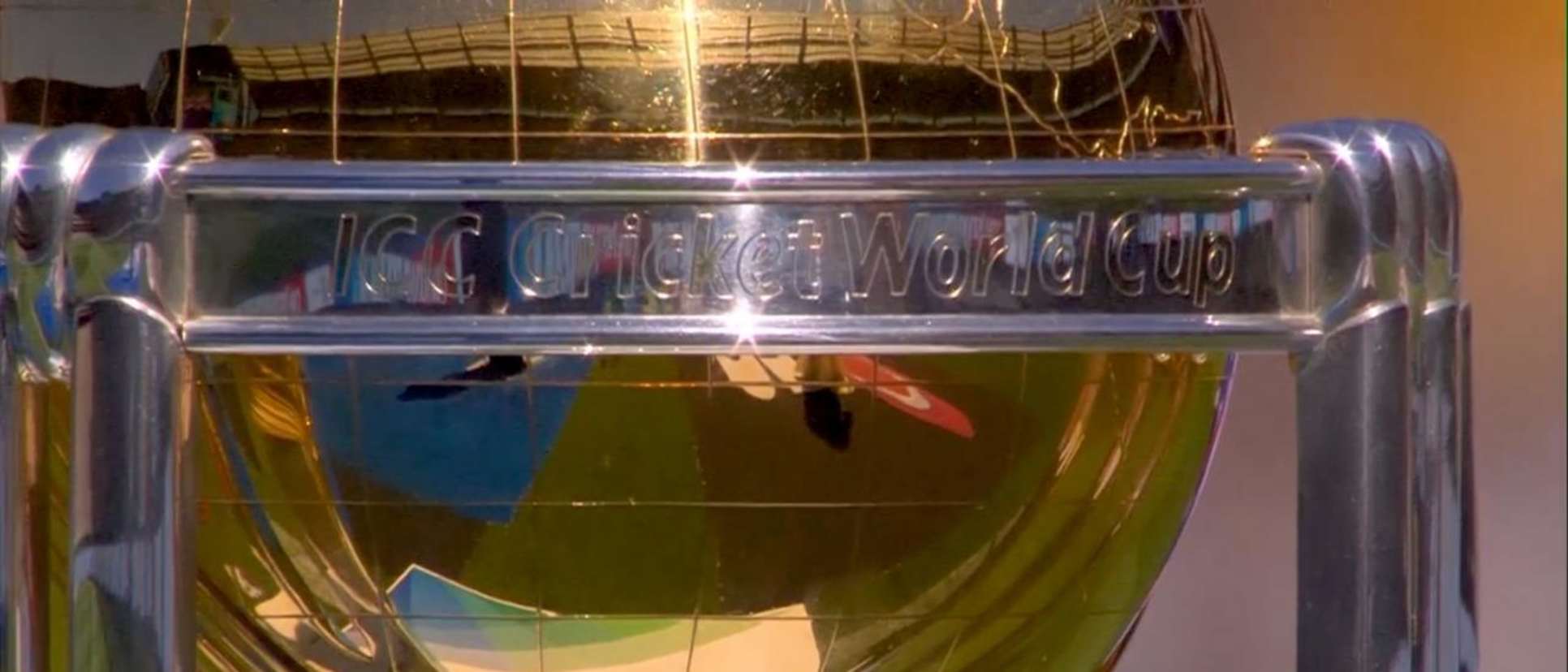The making of the ICC Cricket World Cup Trophy

There is plenty that goes into the making of the ICC Cricket World Cup trophy. For most of the stakeholders of the game, the one feature that stands out is, naturally, is the design.
The trophy, given to the 50-over world champions since 1999, requires a lot – can’t stress this enough – of planning.
“To be involved with the Cricket World Cup, to help bring the piece to fruition, is a real privilege for a manufacturer, a British manufacturer as well,” says Steven Ottewill, the Trophy Director.
“The piece weighs about 11 kilos. Its height is 650mm tall. The base is a hardwood base – with any concept trophy, we have to render, draw to scale. We either draw freehand or pen work. That’s the starting point.”
It’s not just a matter of drawing it out. There are a lot of calculations behind it, too.
“It’s a lot of responsibility,” says Zoe Clarke, the Design Manager. “You need to be artistic, and try to produce a nice, organic looking design. But then you need to also have the math behind to work out how it’s being made, and to the drawings.”
How do you actually make a trophy like the @cricketworldcup?
— ICC (@ICC) August 22, 2018
Ahead of the #CWCTrophyTour, here's a peek into its manufacture! 🏆 pic.twitter.com/M7QYWmrYm8
After the designing comes the engraving – a job that requires the utmost skill and practice, and allows for no room for mistakes.
And who better to do it than David Bedford, the Hand Engraver who started out in 1965. “It’s been near on 50 years, it’s been my life. And a passion too – my wife says, ‘I don’t think you’ll ever retire fully',” he says.
Ottewill explains that the concept “encapsulates all of the elements of cricket – the stumps, the globe, the world arena is engraved on the top”.
It’s Bedford’s job to do the engraving, to add character to the various elements.
Ahead of the #CWCTrophyTour, we're learning about how the @cricketworldcup trophy was made.
— ICC (@ICC) August 21, 2018
Meet David Bedford, the man who engraved the trophy. He talks us through an art that allows no room for error. pic.twitter.com/GODCqGygHN
He says drawing skills are an absolute must. “You must be able to draw. Anything we do, to be able to cut it, you’ve to be able to draw. It’s all done free-hand first – drawn, then scribed, then cut. Drawing skills are essential.”
Bedford’s been doing this for so long now that a lot of it comes naturally to him. It's an instinct now. “I’ve got a selection of cutters here that I use for different projects,” he says. “Some of these handles are probably 200 years old, maybe.
“You can pick a cutter up and it just will feel correct – it’s in you, it’s in your hands. Years and years of concentrating, you pick up a cutter and you can just do it.”
What goes into the design of an iconic trophy like the ICC Cricket World Cup?
— ICC Cricket World Cup (@cricketworldcup) August 19, 2018
Ahead of the #CWCTrophyTour, we asked the team who made it!
▶️ https://t.co/RipOnE3pKG pic.twitter.com/2WwLdNaYcl
Then comes the actual manufacturing process – at the end of the design, the engraving, and all else, it’s a long-drawn-out and intricate exercise.
“None of the components you can buy,” says Ottewill. “You can’t say, ‘I’ll have one of those and one of those’.”
A number of people are involved in the process, and they need time, patience, and a lot of love towards their craft to pull it off. “It’s a challenging piece to make,” says James Longstaff, the Silversmith. Ben Filip, the Polisher, says with a laugh, “It has to be perfect.”
It is, isn’t it?